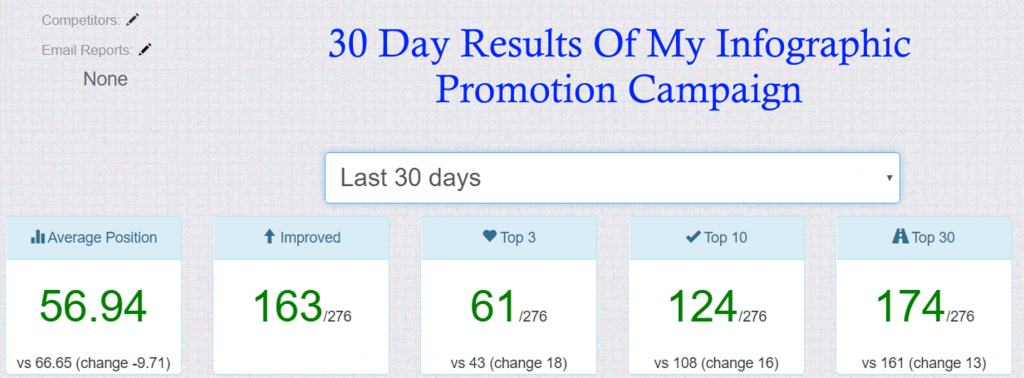The Art Of The Infographic: A Secret Weapon Revealed

For those of you who are knowledgeable about Search Engine Optimisation (SEO), you’ll know that getting backlinks to your website is essential if you want to rank high in the Google search results for your target keywords.
If you’re wondering what a backlink is at this point, it can be defined as ‘an external link from one website to a specific page on another’, and they’re highly valuable for SEO purposes because the number of backlinks a website receives from other, authoritative sites in a relevant industry, is the single biggest factor which determines where that website will rank in Google. This has been the case for many years now (perhaps even since the day Google was founded back in 1998), and that doesn’t look likely to change anytime soon.
The Basics Of Backlink Building
Backlinks are easy enough to understand, but far more difficult to generate, and therein lies the problem.
SEO gurus usually suggest creating backlinks to your website from social media accounts, business directories, trade directories, online press releases, and if they’re really on the ball, guest posts on other websites.
This is all good advice, but it’s fairly common knowledge these days, and seeing as many of your competitors will be doing these things too, you won’t get much advantage from creating these types of backlinks alone; putting yourself on a level playing field may be the best you could hope for.
So then, the question now is what kind of backlinks to your website can you create which will put you ahead of the pack?
In truth, if you were to follow Google’s guidelines to the letter, then the question of how to build backlinks to your site so that its rankings improve, is not one which would ever arise, because those guidelines clearly state that creating backlinks for ranking gains is against the rules.
This is of course, a very absolute definition, and if it were followed by everyone, all of the time, then the SEO industry would look very different indeed.
Risk Management
As it is, SEO can be seen as a game of risk management, where the objective is to build as many high-quality backlinks to a website as possible, without being penalised by Google.
On one extreme end of the spectrum is putting no thought whatsoever into backlinks and how to generate them (I doubt there is a single professional SEO in the world who thinks like this), while the other extreme consists of a range of shady tactics (such as paying for links) that will almost certainly bring about a penalty, if you’re caught.
My philosophy is that I have no right whatsoever to take unnecessary risks with someone else’s business, so I always stick as closely as possible to Google’s guidelines, without sacrificing the goal of generating as many quality backlinks to my clients’ websites as I can.
The Value Of Infographics
So where do infographics come into all this?
Well, infographics (which can be defined as ‘a visual representation of information or data, in a form such as a chart or diagram’), have exploded in popularity over the past 5 or so years.
When you examine how the human brain processes information, this is not surprising.
For example, a 1982 study by 3M Corporation found that visuals are processed 60,000 times faster than text, while a 2019 review by academics from Harvard University, Oxford University and King’s College London found that the bombardment of online information and notifications which we constantly receive from social media, blogs, forums, messaging apps, news websites and more, means that our attention spans are drastically shortening, so anything which can ‘cut through the noise’ and get its point across quickly, stands a far greater chance of making an impression on our minds in this hugely congested environment.
For this reason, infographics have been one of the most effective forms of online content over the past few years, racking up enormous numbers of social shares and backlinks, and being seen by hundreds of millions (maybe even billions) of people.
Personally, I have found a lot of success in terms of securing backlinks for clients and improving their rankings, through a program of infographic creation and promotion. For example, as the image accompanying this article shows, a recent 30 day infographic promotion campaign which I ran for one of my clients produced substantial ranking improvements, helping to increase the number of target keywords they’re ranking in the top 3 positions for, from 43 to 61 – a gain of almost 42%.

How You Can Benefit
Clearly then, creating and promoting infographics is a great way to boost a website’s Google rankings, but how can you use this strategy yourselves for your own sites?
Firstly, and in all seriousness, the best advice I can give is to get in touch with either myself, or Quay Magazine’s Queen Bee herself, Eleanor Stafford, because our infographic creation and promotion process is tried, tested, affordable and almost guaranteed to get results.
However, if you fancy having a go yourself, here’s what I’d recommend.
If you have some graphic design experience, then congratulations, you’re at an advantage right away. If not, there are online infographic creation tools such as Piktochart or Venngage which you can use.
In terms of what kind of topic your infographic should be about, you can either use a tool like Buzzsumo or Content Studio to get an idea of what infographics in your field have gone viral over the past few months, and then brainstorm a similar topic, or you could browse through a comprehensive data aggregation website such as Statista, until you find something which you think would work well for your audience.
Once your infographic is complete, then it’s time to promote it!
This section deserves far more words than I am able to give it, but as a minimum, you should research a tool called Quuu Promote, which is a social media promotion tool that will get your infographic shared across social media platforms hundreds of times every month, and you should also research the vast array of online infographic directories, which can be a great way to showcase your creations to a massive audience, and generate dozens of powerful new backlinks, from both the directories themselves, and also from people who discover your infographic on the directories, feature it on their own website, then credit you as the creator.
As a bonus tip, try using a tool such as Pixsy to keep track of exactly where your infographic is being featured online, and follow-up with anyone who has included your infographic on their website without linking back to your site as the source.
Follow these steps and you’ll be well on your way to harnessing the power of infographics for your own SEO strategy!
Written by: Alex Belsey from New Frontiers Marketing
alex@new-frontiers-marketing.com

